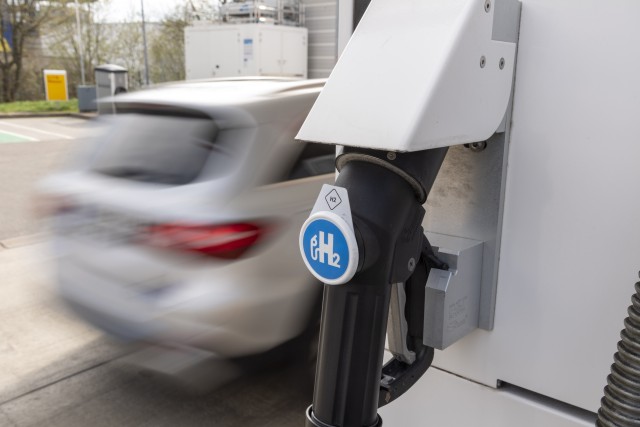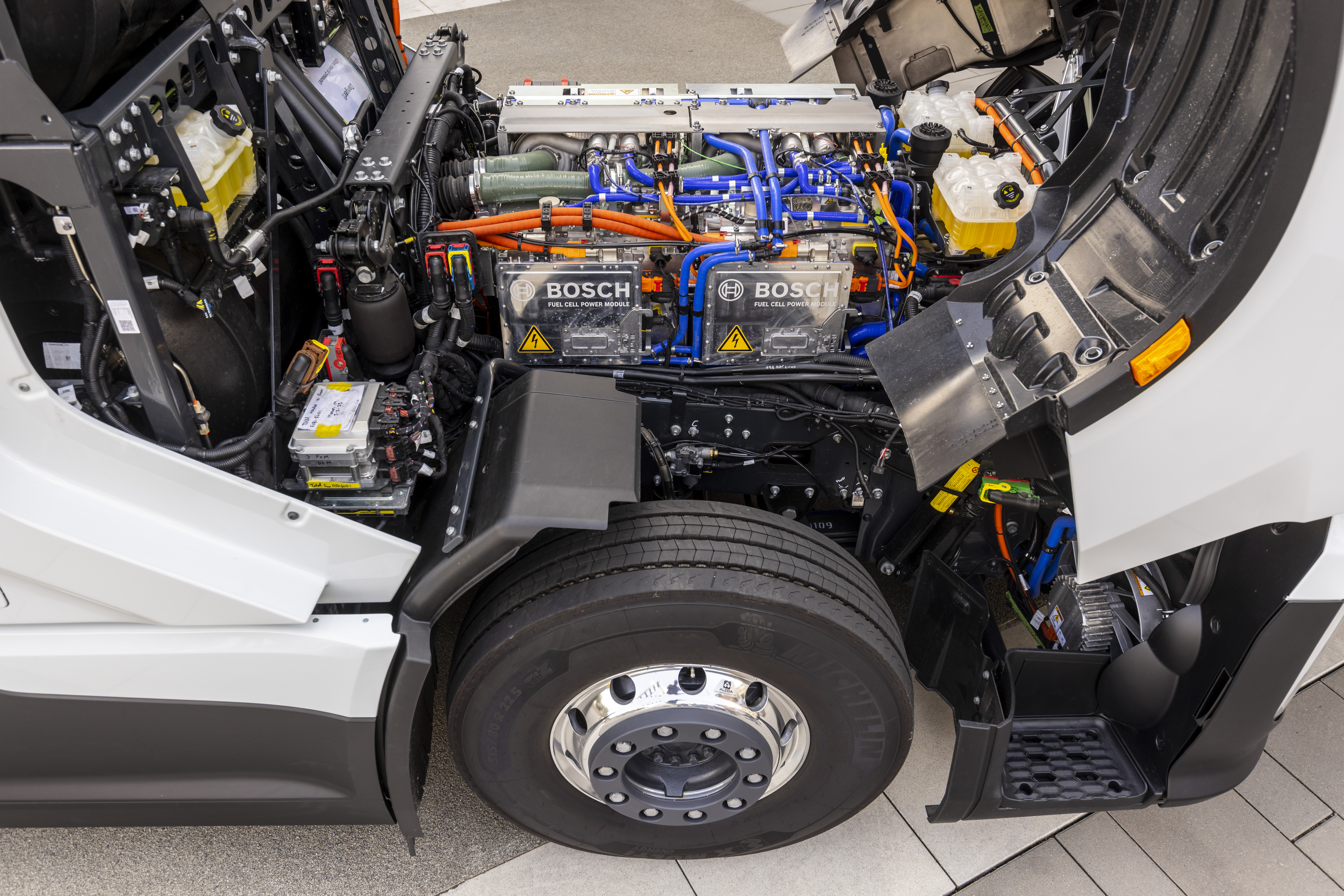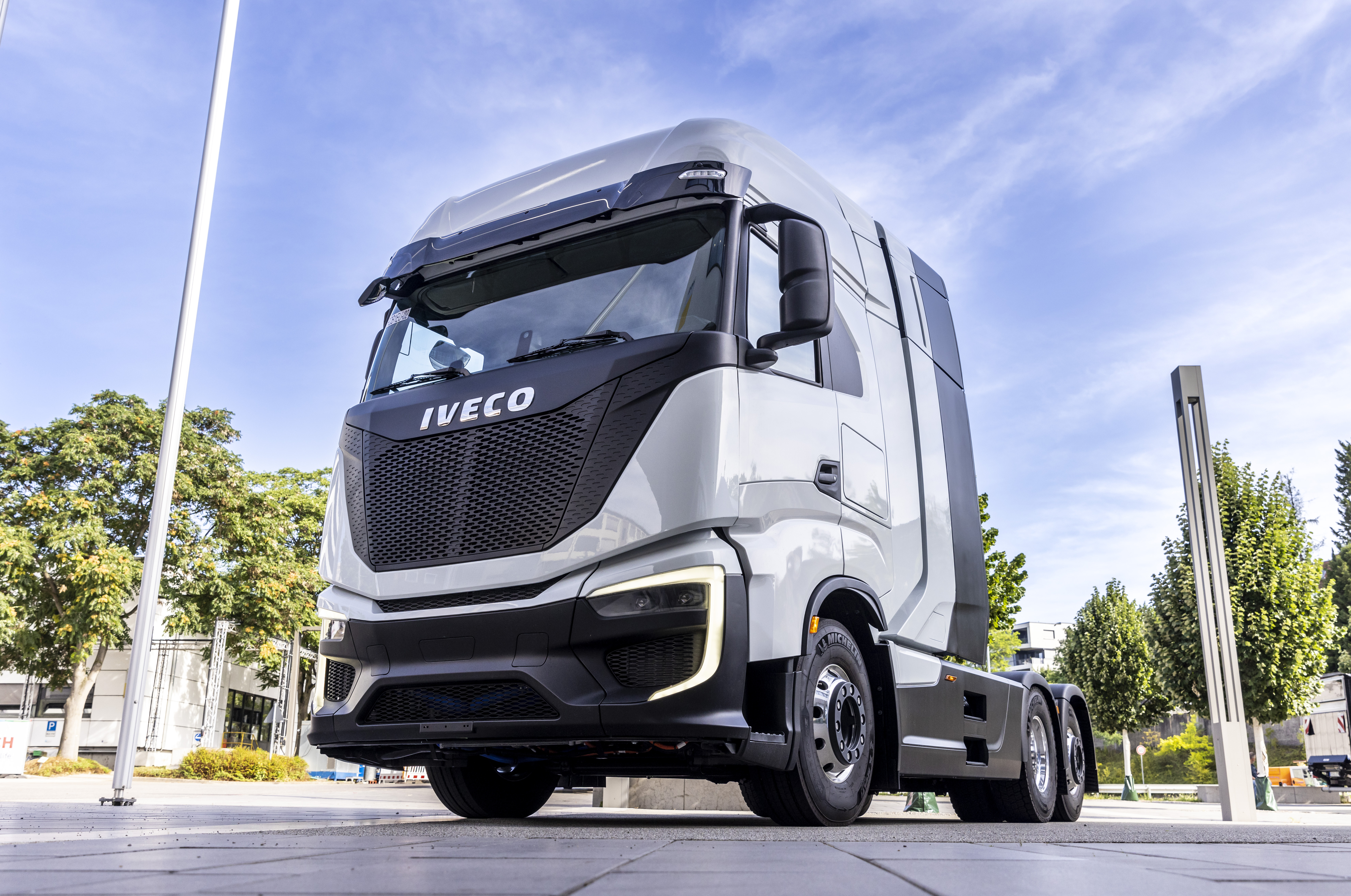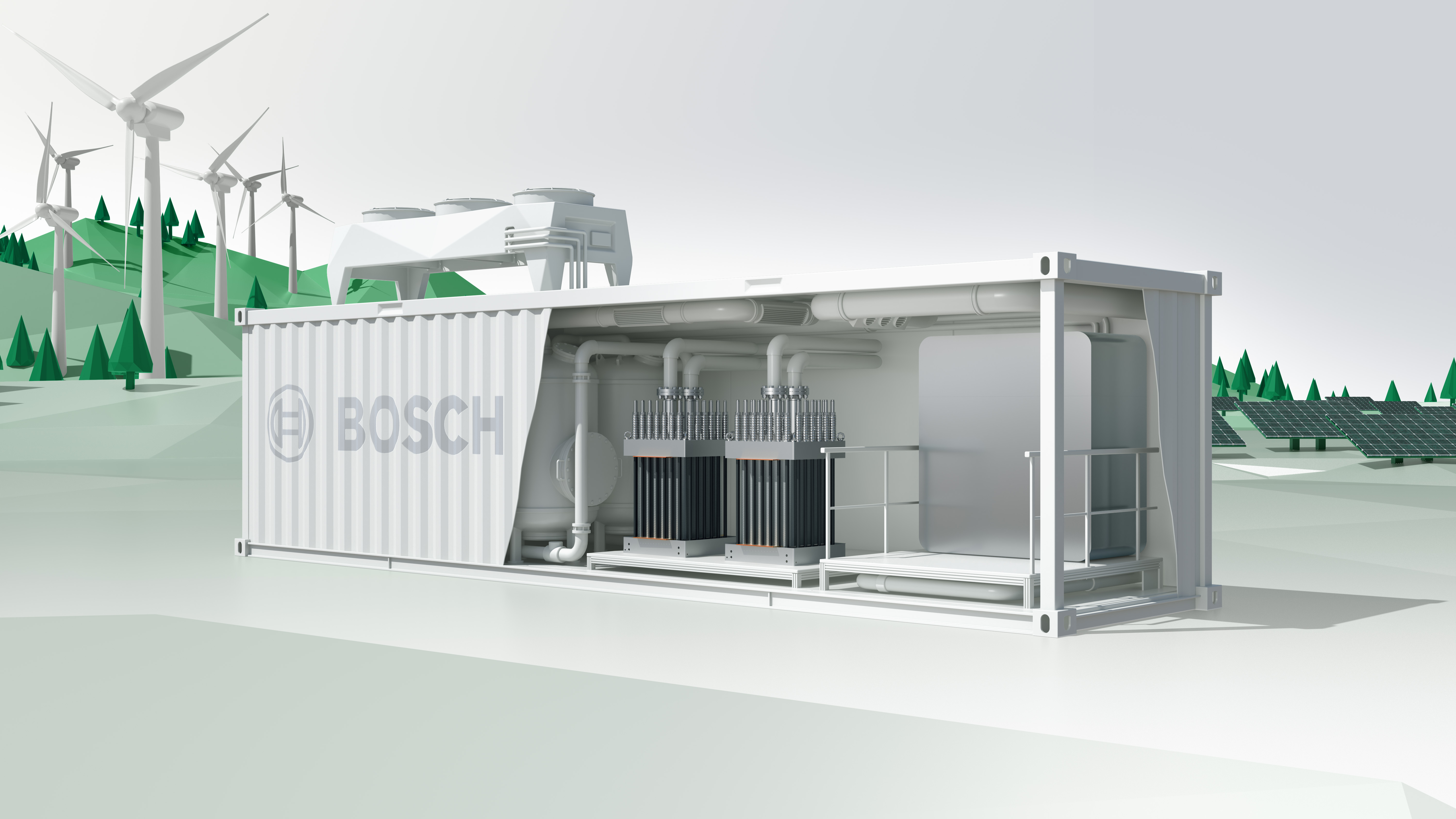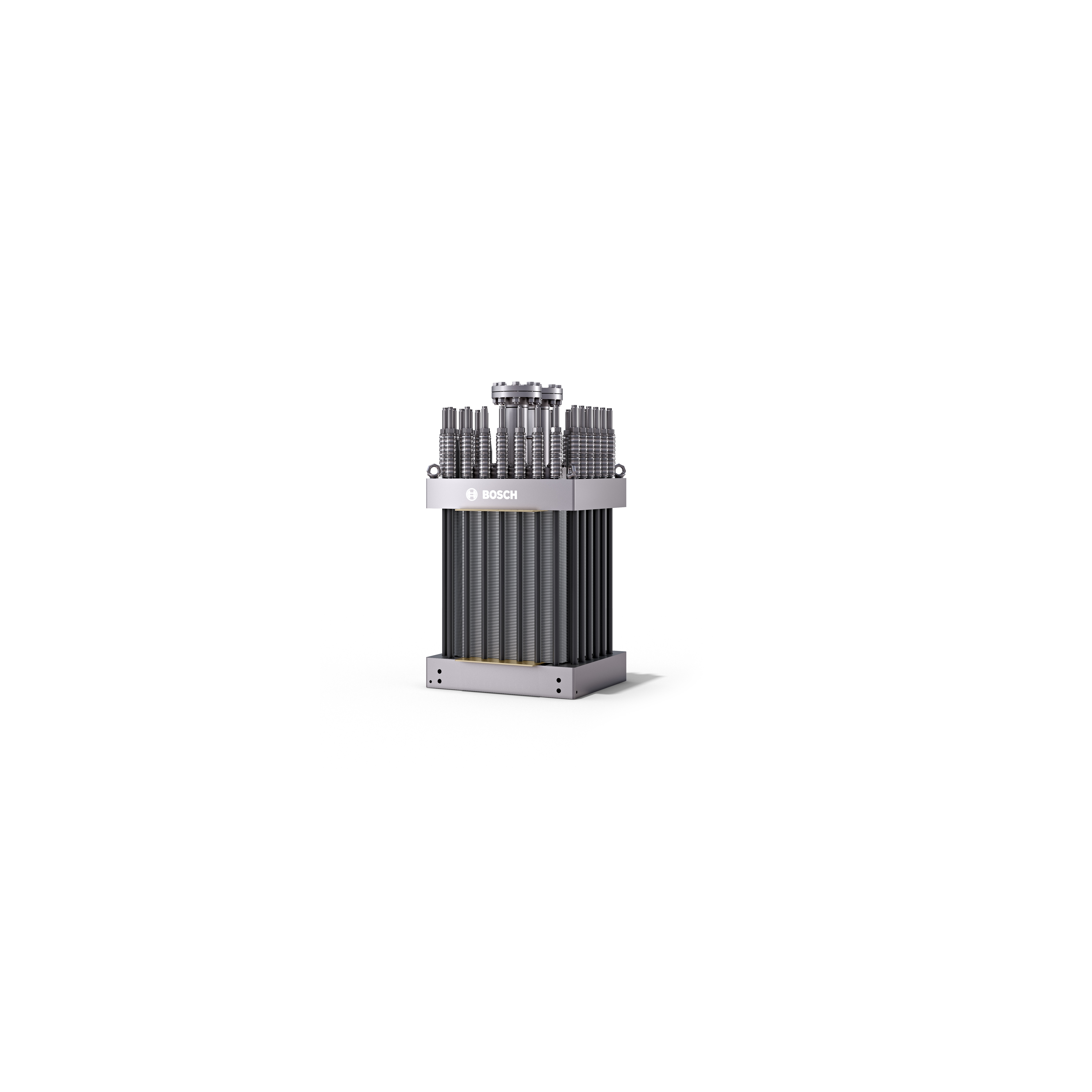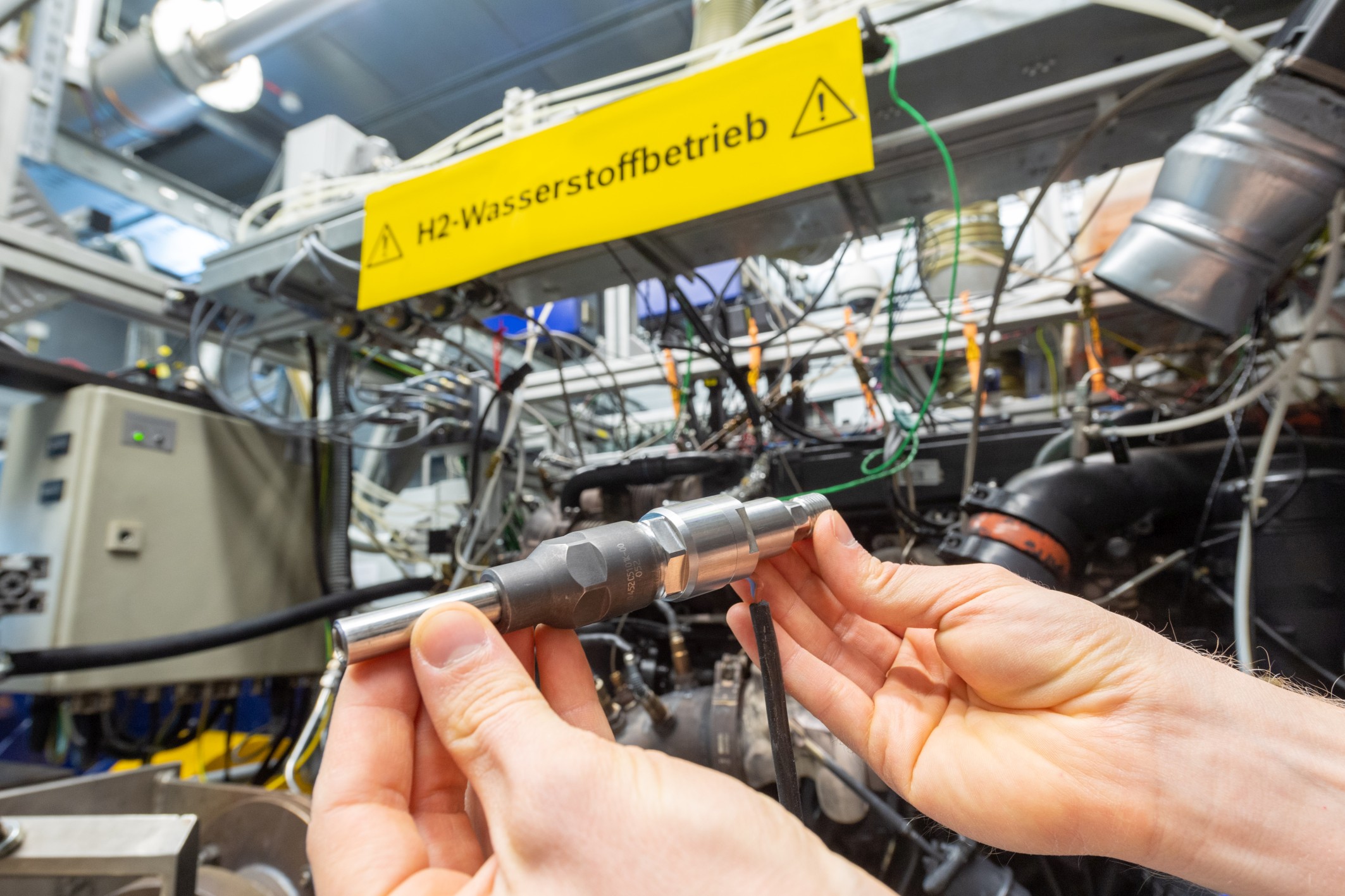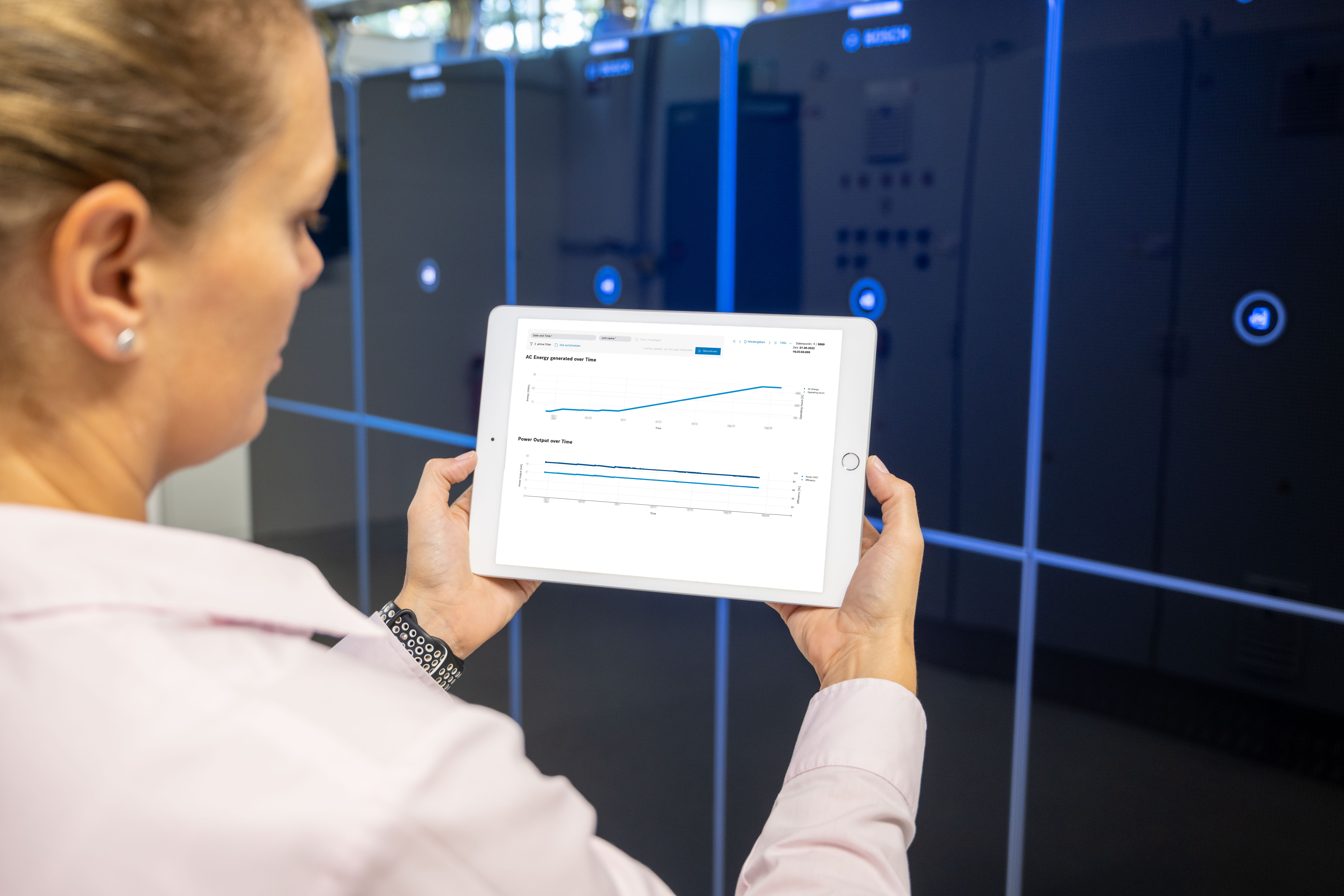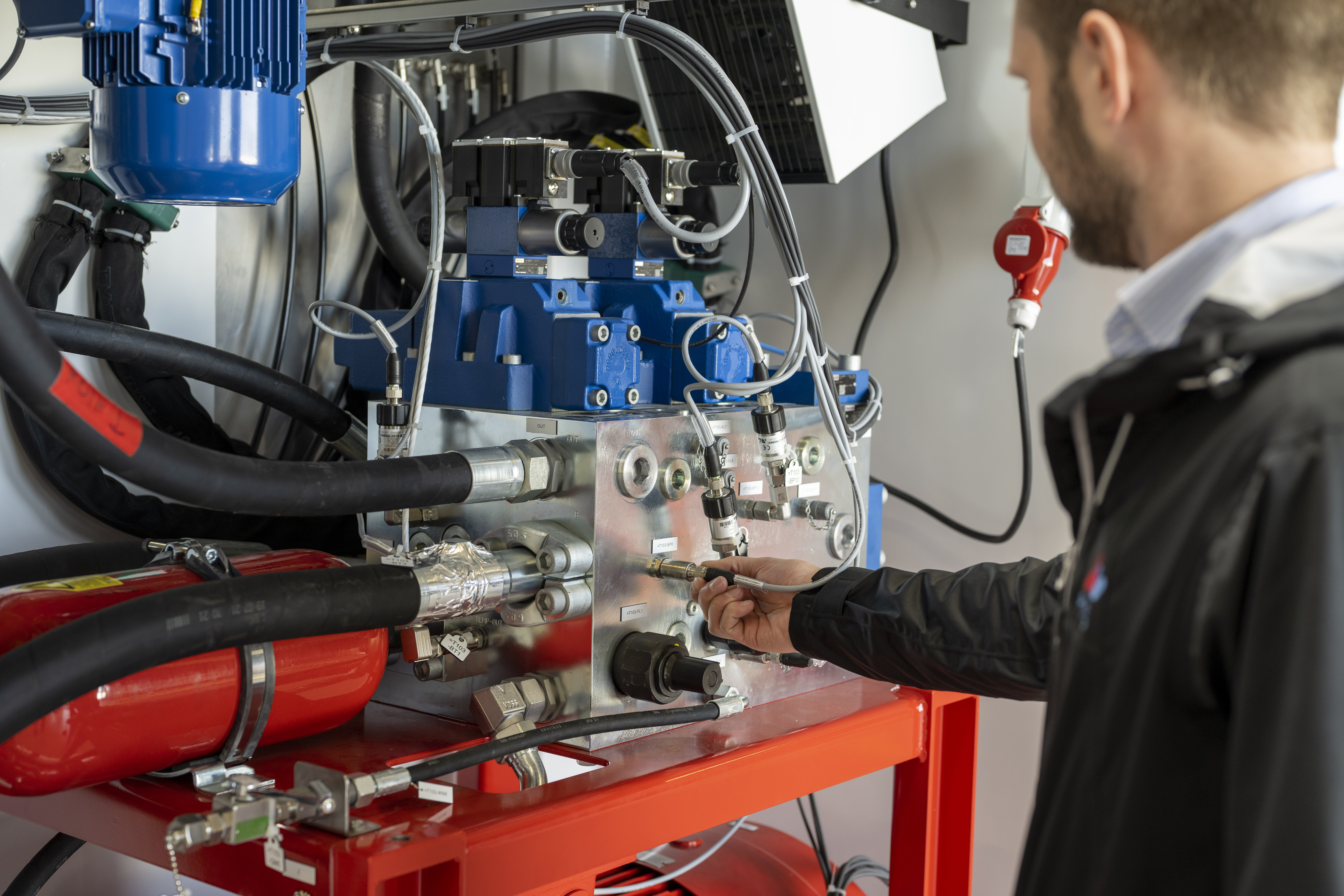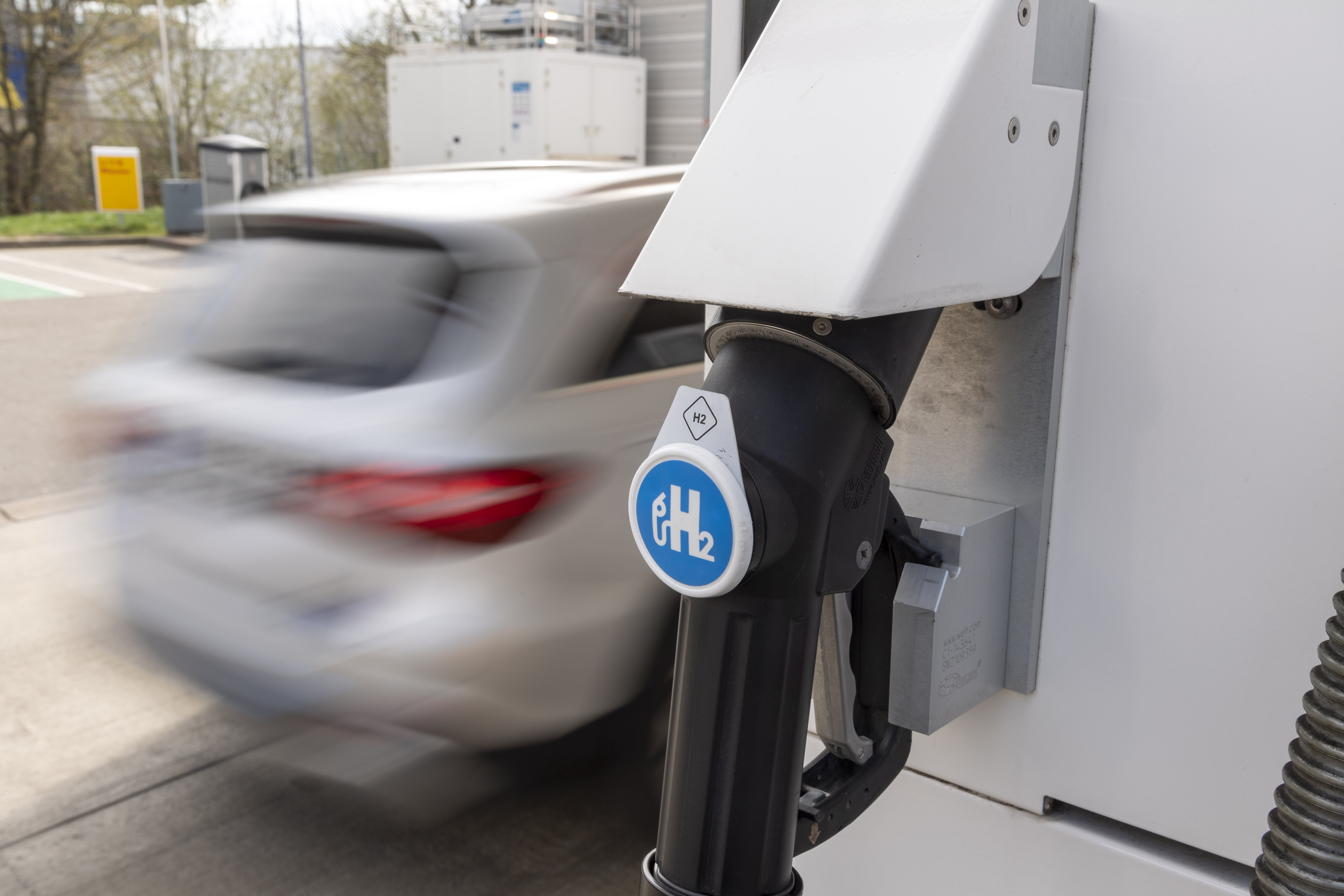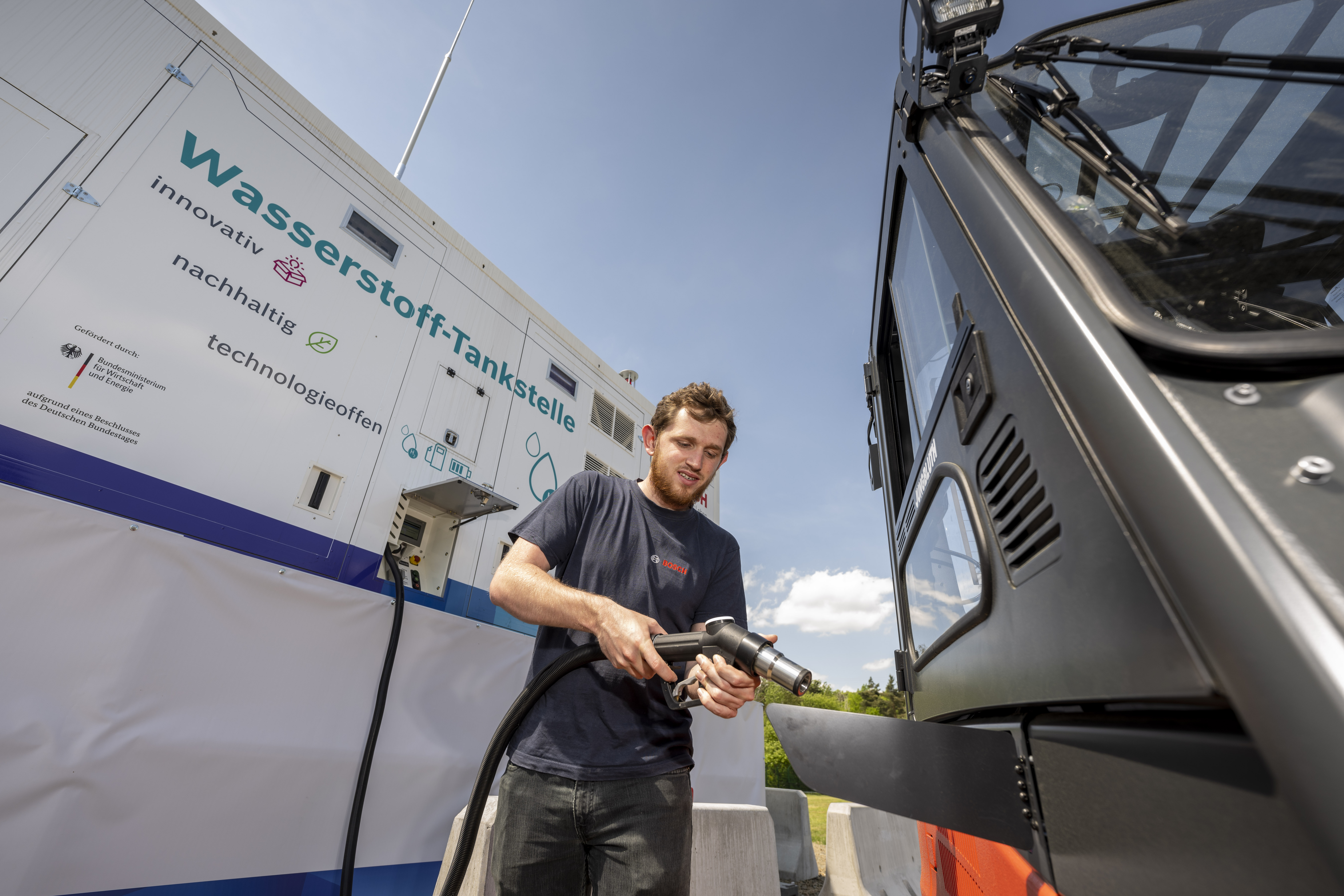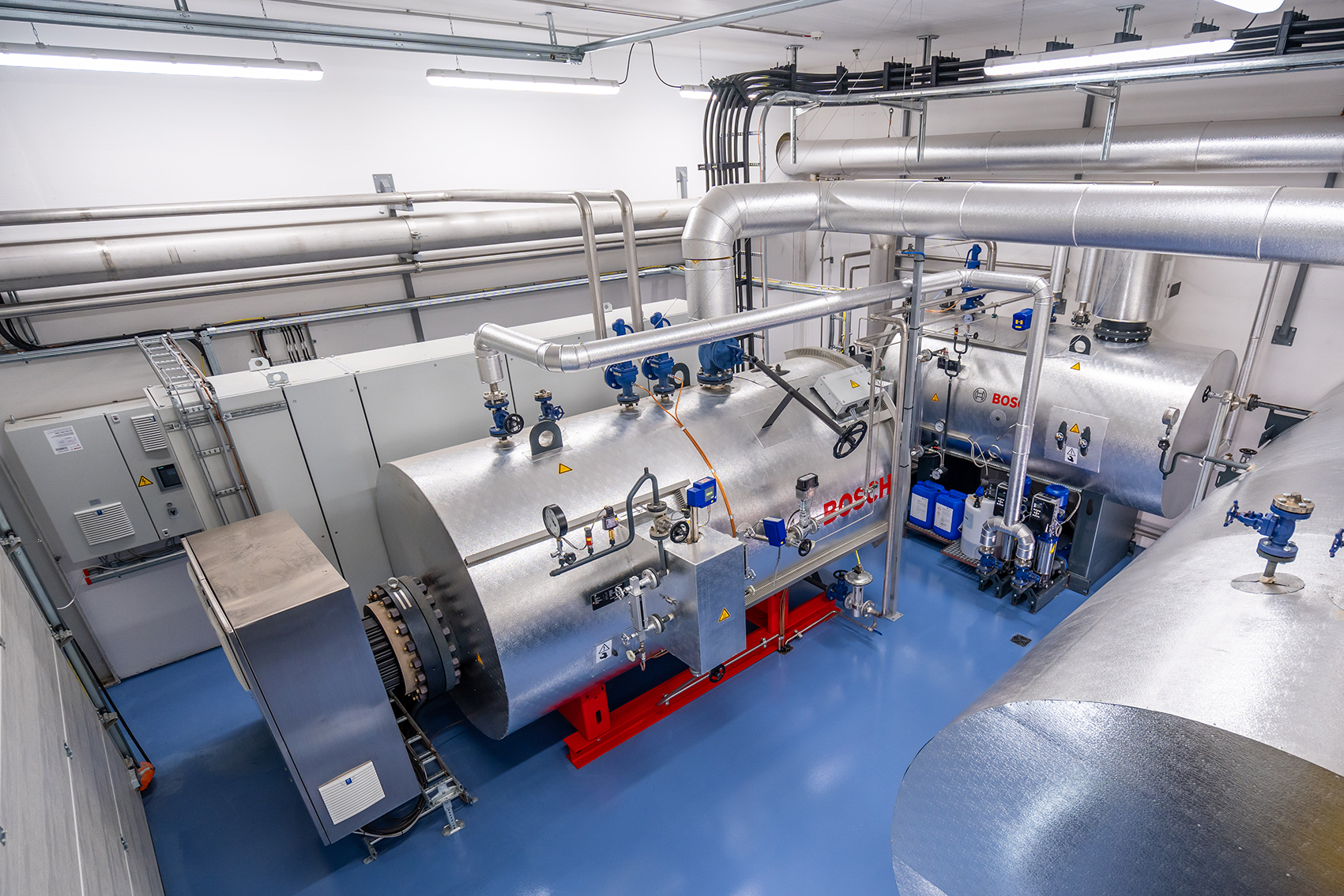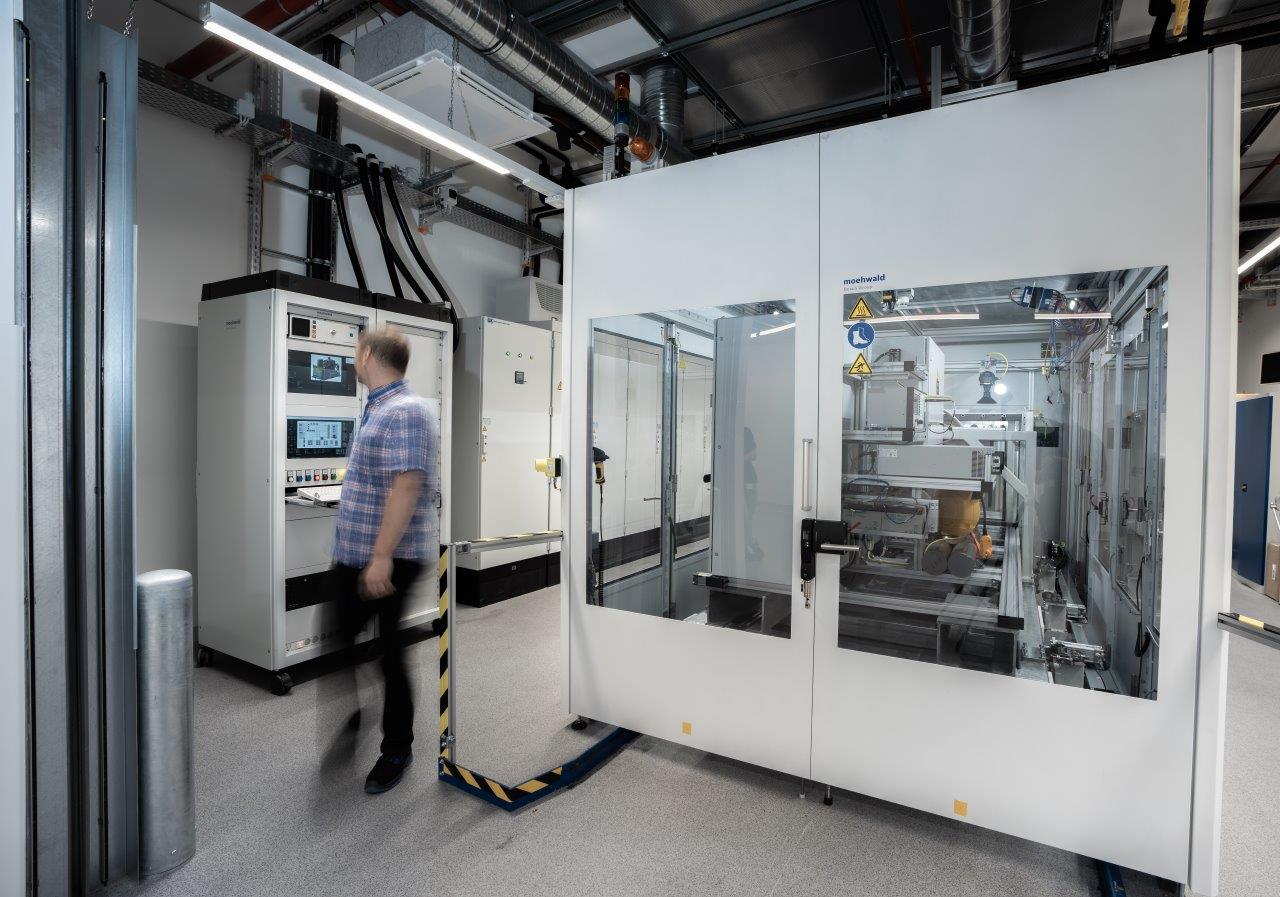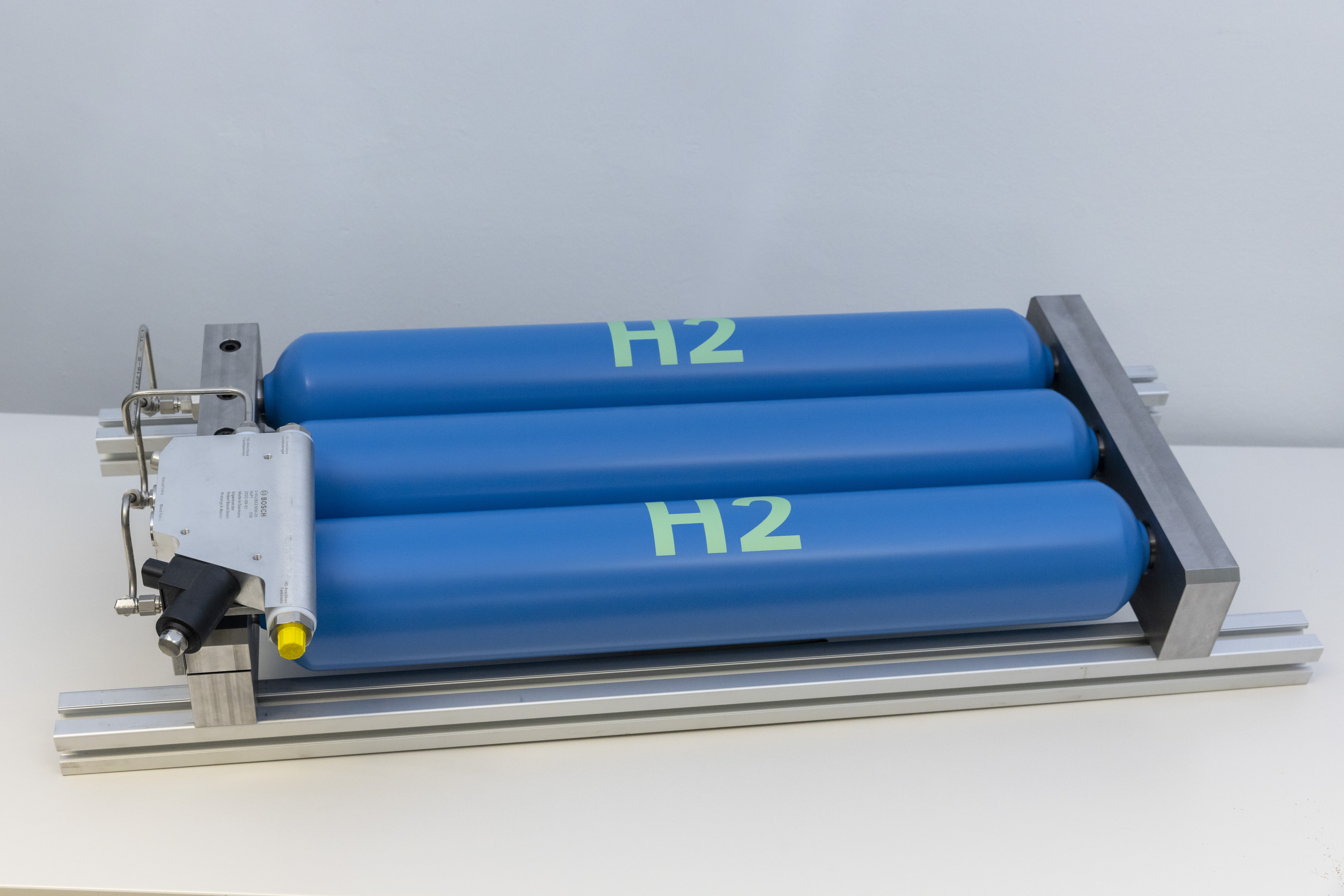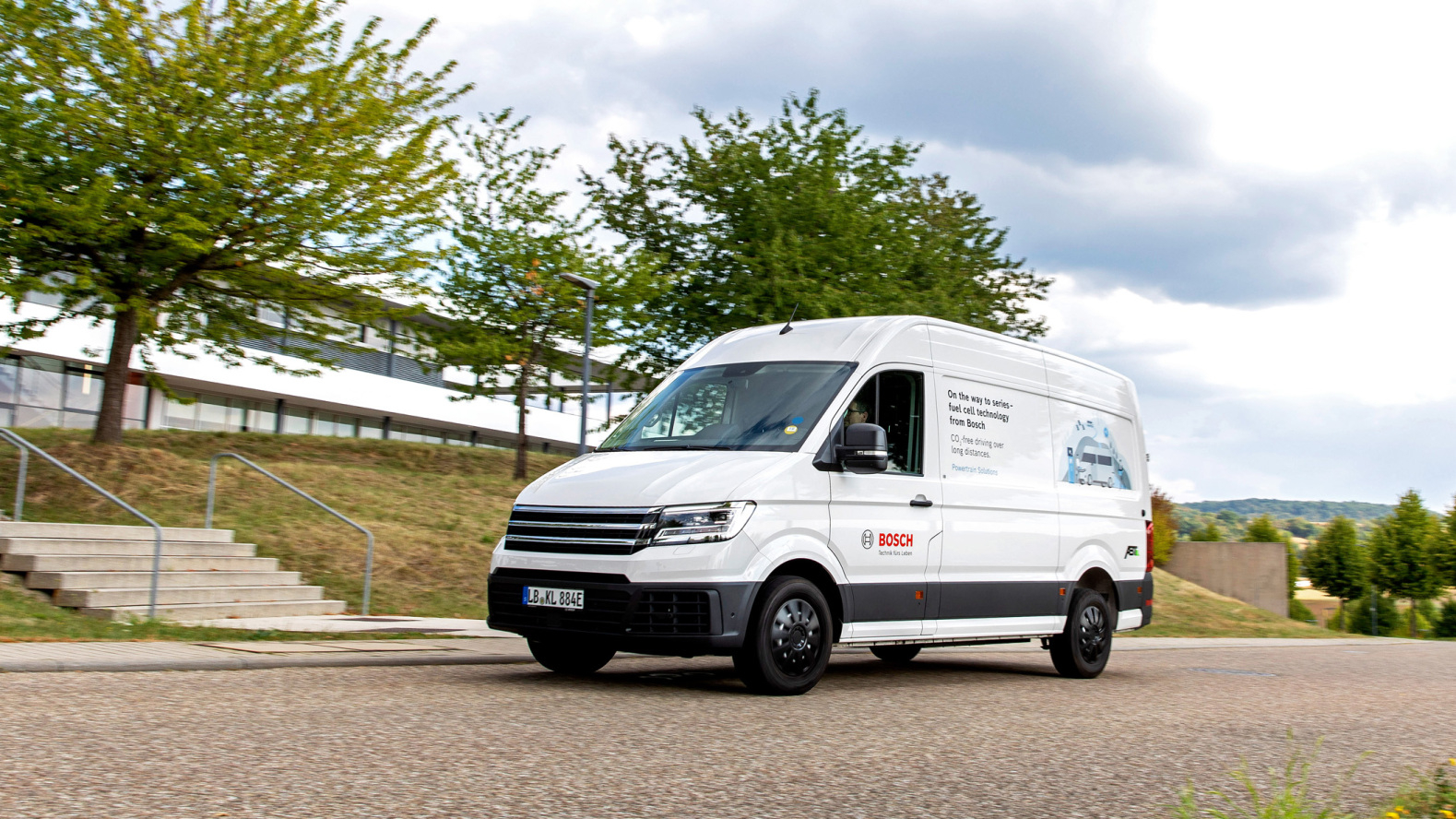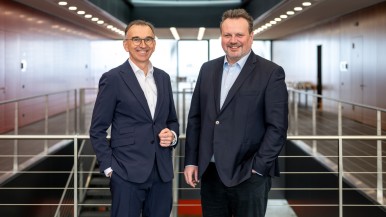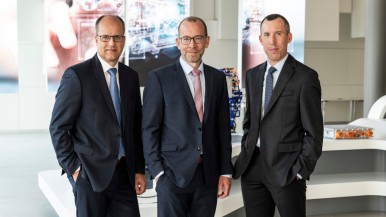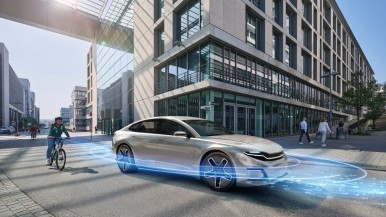The exhibits on display at Bosch Tech Day 2023 in overview
PEM stack – hydrogen for climate-neutral transportation
The PEM fuel-cell stack is the heart of the mobile fuel-cell system. PEM stands for proton exchange membrane. The stack for mobile applications comprises many individual fuel cells. Depending on the output required, there can be several hundred of them. In these cells, hydrogen reacts with oxygen to produce electricity and water. The membrane inside a fuel cell prevents electricity from flowing between the anode and the cathode. At the same time, it also prevents the hydrogen from crossing over to the oxygen. The membrane is proton-conducting, and allows hydrogen ions to permeate. One of the technologies used when manufacturing the bipolar plates is high-speed laser welding – a process that only exists at Bosch. It is used to make 1,200 meters of welds in each stack hydrogen-tight. Bosch manufactures these stacks in its plants in Bamberg, Germany, and Wuxi, China. At the end of 2022, the stacks were ready for volume production. Others manufacturing sites are planned – for example, in the United States.
Service life of PEM fuel cells – anti-aging solutions
Over the course of their service life, fuel cells undergo an aging process: platinum particles and carbon supports oxidize and become degraded; platinum particles grow and catalyst layers become thinner. To solve this problem, Bosch researchers have developed a special coating that can mitigate these processes. In addition, systemic measures permit an operating strategy that avoids aging-relevant burdens such as high cell voltages, and will help further prolong the service life of PEM fuel cells to as much as 30,000 operating hours in the future. Moreover, certain aging effects can be reversed: in these cases, Bosch researchers have developed restorative processes.
Hydrogen engine – proven basis, but carbon neutral in operation
To power vehicles, hydrogen can be used not only in fuel cells, but in hydrogen engines as well. They are particularly suitable for heavy vehicles driving for protracted periods with especially heavy payloads – for long-haul freight and especially for construction and agricultural machinery. The engines and powertrains already available are a good basis for this, as many of the systems components in existing powertrain solutions can be transferred to the fundamental structure of the fuel, air-supply, and exhaust system. Bosch is developing two systems for hydrogen engines: port and direct injection of hydrogen. The injector for direct injection has to function without the lubrication provided by liquid fuel, and to open and close reliably roughly one billion times over a truck’s service life. Apart from water, the only relevant waste product emitted by a hydrogen engine is nitrogen oxide. Using proven exhaust-gas treatment systems, this has no appreciable effect on air quality. The first production vehicles equipped with these engines are expected to appear on the roads in 2024.
Hydrogen tank – innovative, space-saving solution for passenger cars
Currently, the hydrogen for fuel-cell passenger cars is stored in large-volume carbon fiber-reinforced tanks at 700 bar. Bosch researchers have developed a tank with two new features. First, it comprises steel cylinders. Second, it is an underfloor tank, fitting into the space otherwise occupied by batteries. Externally, the system resembles conventional steel tanks. But hydrogen can cause steel to become brittle. As part of a publicly funded project, a prototype system has been created that fully complies with the demanding international rules for high-pressure tank systems. The tank’s material gives it a cost advantage and makes it recyclable.
IVECO Heavy Duty FCEV – hydrogen-powered truck for Europe
The IVECO Heavy Duty FCEV (fuel cell-electric vehicle) is a hydrogen-powered semi for the European market. With its fuel cell-electric powertrain, and in combination with green hydrogen, the semi emits zero emissions locally. With a payload of roughly 70 kilograms of hydrogen, the truck can drive up to 800 kilometers without refueling. It currently takes roughly 20 minutes to refuel. This makes the IVECO Heavy Duty FCEV suitable for many uses, all the way up to long hauls.
eDistance Truck – Bosch technology for climate-neutral trucks
Bosch offers various powertrain solutions for long-haul trucks. These include fuel cell-electric, battery-electric, and hybrid powertrains. The heavier the payload and the longer the route, the more the fuel-cell powertrain comes into its own, with short refueling stops and a long range. If the hydrogen used comes from renewable sources, then the fuel cell’s operation is also climate neutral. Bosch offers individual components for the electrical powertrain, the fuel cell, and H2 storage systems, as well as the complete fuel-cell power module. This module, the FCPM, is scalable and, apart from the stack, combines all the submodules for hydrogen supply, air supply, and current draw. A complex system has been reduced to an easy-to-integrate solution.
Hydrogen filling stations – drive solutions for compressing H2
To be able to refuel vehicles with hydrogen quickly and simply, the gas has to be compressed to as much as 900 bar. Compressors featuring efficient and low-maintenance Bosch Rexroth drives will play a significant role in the establishment of a hydrogen infrastructure. For example, Bosch Rexroth and Maximator Hydrogen have developed a solution for the efficient compression of hydrogen for filling stations, storage tanks, and pipelines. Maximator Hydrogen plans to manufacture some 4,000 compressor systems by 2030. For the energy-efficient operation of hydrogen compressors, Bosch Rexroth offers a low-maintenance, scalable systems solution. Scalable drive units with ratings currently up to 250 kilowatts offer filling station operators an affordable way into hydrogen technology. The new container-based compressors can potentially reduce total cost of ownership by half compared with the commercially available alternatives.
Stack and smart electrolysis module – Technology for H2 electrolyzers
Bosch not only plans to use hydrogen, but also to provide smart technology for its production. For this purpose, Bosch is developing the electrolysis stack, the central element of an electrolyzer. The stack comprises more than 100 electrolysis cells that use electricity to split water into oxygen and hydrogen. It is designed for an output of 1.25 megawatts. That is equivalent to the production of 23 kilograms of H2 per hour. On the hydrogen side, the resulting pressure is more than 30 bar. The Bosch electrolysis stack is suitable for use in smaller-scale plants producing 1 megawatt and more, all the way up to large, gigawatt-scale plants. It is expected to be market-ready from 2025. First pilot projects with customers are in preparation and will start next year. In addition, Bosch is planning to combine the electrolyzer stack with a control unit, power electronics, and various sensors to create a “smart electrolysis module.” These elements are designed to be compatible and save space, and optimize systems efficiency, reliability, installation, and setup.
Solid oxide fuel-cell system – demand-driven power generation
Bosch solid-oxide fuel-cell (SOFC) systems are distributed power plants that can be used in commercial buildings, industrial plants, and computing centers. An SOFC system generates a power output of 100 kilowatts, and depending on power requirements, several systems can be combined for megawatt-scale output. An SOFC system uses conventional fuels (biomethane or natural gas; in the future also hydrogen) to generate heat and power. It achieves as much as 90 percent overall efficiency. Expertise in functional ceramics can be used when manufacturing these stationary fuel-cell stacks – expertise that was developed when manufacturing lambda sensors for vehicles. They are expected to be ready for production by the middle of the decade.
Recycling platinum from fuel-cell stacks
The manufacture of PEM fuel-cell stacks requires valuable raw materials such as platinum. This process can be made far more sustainable and economical if the platinum is recovered from end-of-life stacks. For this purpose, Bosch has developed novel contract models that secure the company the right to repurchase stacks for mobile applications. This creates predictable and stable supply chains and improved availability of resources, and also significantly reduces carbon emissions. In addition, Bosch researchers have developed solutions that use chemical processes to recover platinum in a more eco-friendly way. For these processes, it has filed for more than 20 patent families. But resource conservation doesn’t just start at the end of the product life cycle even during operation, it is planned to use digital twins to monitor the service life and function of the components in electrolyzers and fuel cells in mobile and stationary applications. This allows maintenance, repair, and recycling to be planned in advance.
Manufacturing and testing technology - how fuel cells are made
Bosch Manufacturing Solutions, the company’s special-purpose machinery unit, supplies advanced manufacturing equipment and testing technology for fuel-cell manufacturing – from individual components to complete systems. In total, more than 50 percent of the required manufacturing equipment comes from Bosch itself. For example, the test benches in Feuerbach were developed by the Homburg-based Bosch subsidiary Moehwald. When testing stacks and systems, natural conditions are simulated for the end-of-line functional test, where the PEM fuel cells are put through their paces. Here, gas composition, temperature, pressure, and humidity are the same as in the actual vehicle.
H2-ready industrial boiler – climate-neutral heating and process heat
With its futureproof industrial boiler systems, Bosch helps manufacturing countries worldwide reduce their energy costs and reach their sustainability targets – all the way to making their heat processes climate neutral. Industry is responsible for roughly one-fifth of global carbon emissions, part of which come from the generation of steam, heat, and hot water. Hydrogen and green electricity have huge potential for industrial heating and process heat. Bosch steam and heat generators can be operated flexibly on 100 percent green hydrogen, green electricity, or biofuels. Many legacy systems have already been prepared for an upgrade to renewable fuels. Hybrid boiler systems are a further promising technology. With a design featuring an electric heating element and a burner, different fuels can be used at the same time, such as green electricity and hydrogen. That means greater flexibility, security of supply, and independence of fossil fuels. First pilot systems went into operation in 2022, and are already avoiding carbon emissions equivalent to the average emissions of more than 4,500 households.
H2-ready boilers – technology-neutral solution for climate-friendly heating
Bosch H2-ready boilers can initially be run on natural gas, and then easily converted to hydrogen when it becomes available. An admixture of 20 percent hydrogen to grid gas is also possible without any refitting. Once 100 percent hydrogen becomes available, expert installers can convert the H2-ready boilers to 100 percent hydrogen operation within roughly one hour. Only a few components, such as the burner, have to be replaced. An H2-ready boiler takes up very little room. This makes them an attractive alternative for legacy buildings where space is restricted.
